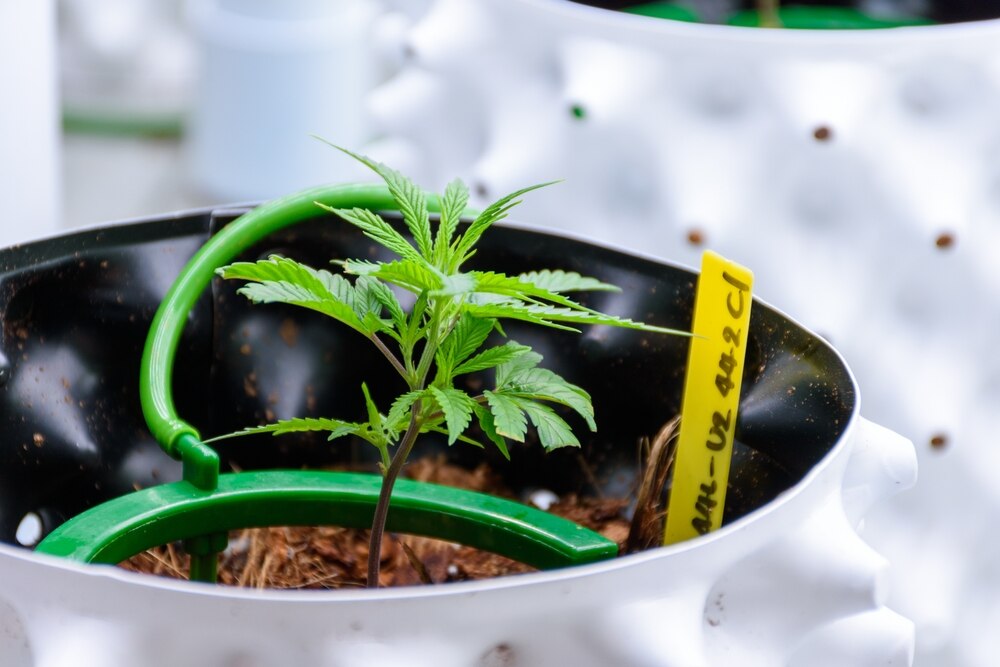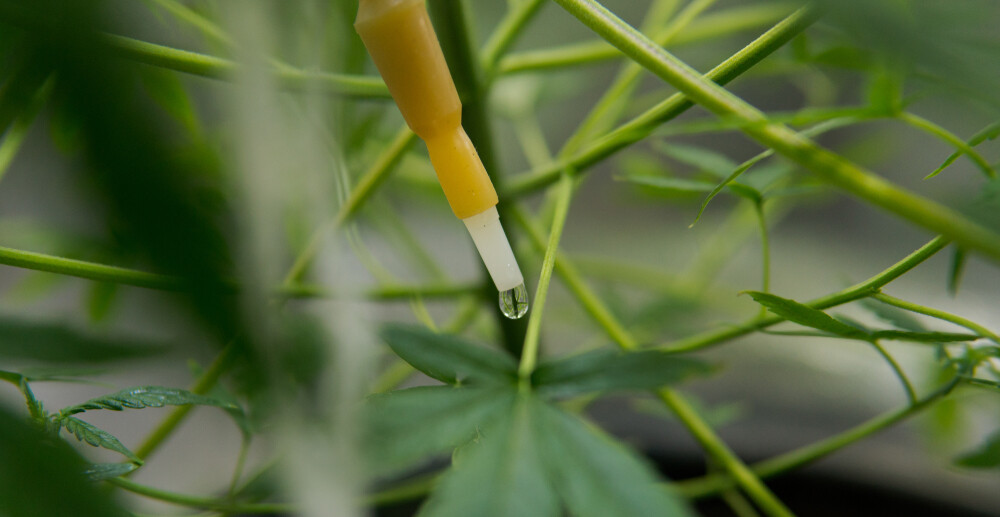The Best Fluffy Pancakes recipe you will fall in love with. Full of tips and tricks to help you make the best pancakes.

How to Grow Cannabis Using Drip Irrigation
So, you’re getting into growing cannabis and want to up your game with drip irrigation. I’ve got you covered. Drip irrigation is a fantastic system to keep your plants happy and hydrated without all the hassle of traditional watering methods. It’s efficient, precise, and pretty much lets you set it and forget it. I’m going to walk you through everything you need to know, from how it works to setting up your system and keeping it running smoothly.
Introduction to Drip Irrigation for Cannabis Cultivation
What is drip irrigation?
Drip irrigation is a method of watering plants by delivering water directly to the roots through a network of tubing and drippers. The system is designed to drip water slowly and consistently, which helps to minimize water waste and keep soil moisture levels stable. Unlike using a watering can or a hose, drip irrigation allows you to control exactly how much water each plant gets, making it a fantastic tool for cannabis cultivation.
Benefits of using drip irrigation for cannabis plants
Drip irrigation is all about efficiency. First off, it saves water by delivering it straight to the roots, avoiding runoff or evaporation. It’s also super convenient, especially if you’ve got a larger grow or can’t be there to water your plants every day. The steady flow of water helps prevent overwatering or underwatering, and you can even mix nutrient solutions into the water for an all-in-one solution.
How does drip irrigation differ from other irrigation methods?
Compared to hand-watering, drip irrigation is a lot less work. You won’t be lugging around heavy water cans or trying to evenly distribute water to all your plants. It’s also more controlled than methods like sprinkler systems or flood irrigation, which can lead to water waste, uneven watering, and even mold if things get too soggy.

Advantages of Drip Irrigation for Cannabis
Water conservation and efficiency
One of the biggest perks of drip irrigation is how much water it saves. Since the water goes straight to the roots, you’re not losing any to evaporation or runoff. This is especially useful if you’re growing outdoors where conditions can be unpredictable. You can water exactly where it’s needed, which is great for both your plants and the planet.
Improved nutrient delivery to the roots
Another major benefit is that you can deliver nutrients directly through the system. Just mix them into the water, and your plants get a steady supply right at the roots. This method helps your cannabis plants absorb nutrients more effectively, resulting in healthier growth and better yields.
Pest and disease control benefits
Drip irrigation keeps the leaves and stems dry, which helps prevent issues like mold and mildew. Plus, by keeping the soil consistently moist (but not too wet), you create an environment that’s less attractive to pests. No soggy, bug-friendly mess here!
Customizability and flexibility for indoor and outdoor grows
Whether you’re growing weed indoors in a tent or outdoors in a garden, drip irrigation systems are super customizable. You can set them up for just a few plants or an entire grow room. You can tweak the flow rate, placement of drippers, and watering schedule to fit your plants’ needs perfectly.
How to Set Up a Drip Irrigation System for Cannabis
Materials needed for a basic system (indoor and outdoor setups)
Here’s what you’ll need:
- Water source (tap or reservoir)
- Tubing (½ inch is typical)
- Drip emitters or stakes
- A timer (to automate the watering process)
- Connectors and stakes to hold the tubing in place
- For outdoor setups, plastic bottles and a few basic tools if you’re going DIY
Step-by-step guide to building an indoor drip irrigation system
- Start by connecting your tubing to a nearby water source.
- Run the tubing around your grow area, placing it close to your plants.
- Use a hole punch to make holes in the tubing where you’ll insert the drippers. You’ll want to place 2-3 drippers per plant.
- Insert the drippers into the holes and secure the tubing with stakes so it stays in place.
- Set your timer to water for about 5-15 minutes once or twice a day, depending on your plants’ needs.
Outdoor drip irrigation using plastic bottles: a DIY solution
For a quick and easy DIY outdoor setup, grab some 2-liter plastic bottles. Cut the bottom off, drill small holes near the cap, and hang the bottles above your plants. Fill them with water and let them drip slowly throughout the day. It’s cheap, easy, and effective for small-scale cannabis grows.
How to customize your system for optimal growth (emitters, timers, etc.)
The beauty of drip irrigation is that it’s totally customizable. Use pressure-compensating emitters for even watering across your grow. A timer is a must for making sure your plants get watered at the same time every day. You can also adjust the flow rate depending on the size of your plants and the stage of growth, even setting up a pulse watering schedule to mimic natural conditions.
Maintenance and Troubleshooting for Drip Irrigation Systems
How to prevent clogs and ensure proper flow
Clogs can happen, especially if you’re using nutrient-rich water, but they’re easy to avoid. Make sure you install a filter at your water source to catch any debris. Also, flush the system with clean water every now and then to keep things running smoothly.
Maintaining optimal nutrient and pH levels in the reservoir
When using drip irrigation, you’ll need to keep an eye on the nutrient levels and pH of your water. I recommend testing the water regularly to ensure your plants are getting the right mix. Adjusting the pH is simple—just use a pH up or down solution to balance it out.
Regular checks and system upkeep
Even though drip systems are low maintenance, you’ll still want to check the tubing and drippers regularly to make sure everything’s flowing properly. Look out for leaks or clogs, and replace any damaged parts as needed.
Drip Irrigation vs Other Cannabis Irrigation Methods
Comparison with hand-watering and other irrigation methods
Hand-watering takes time and effort, plus it’s easy to overdo it. Sprinkler systems waste water and can lead to mold issues if the leaves get too wet. Drip irrigation beats them both by delivering water right to the roots, which is better for the plant and much easier for you.
Pros and cons of drip irrigation in various cannabis growing environments
Pros:
- Water efficiency
- Consistent moisture and nutrient delivery
- Easy to automate
- Reduces the risk of pests and mold
Cons:
- Initial setup cost
- Potential for clogs
- Requires some monitoring and maintenance
FAQ:
What are the best materials for a cannabis drip irrigation system?
You’ll need tubing, drippers, a timer, and stakes. Look for a pressure-compensating drip system and quality connectors for long-term use.
How much does it cost to install a drip irrigation system for cannabis?
Costs vary. A DIY setup could be as cheap as $30, while a more professional system might run $100 or more, depending on the size of your grow.
Can drip irrigation work for both indoor and outdoor cannabis plants?
Yes, drip irrigation is great for both environments. Indoors, it helps avoid water mess, and outdoors, it conserves water and prevents runoff.
How do I prevent my drip system from clogging?
Install a filter at the water source, and flush the system with clean water regularly to prevent buildup of debris or nutrient residue.
How often should I water cannabis plants using drip irrigation?
Water once or twice a day for 5-15 minutes, depending on your plant’s stage of growth and environmental conditions. Adjust as necessary.
If you’re looking to make your cannabis grow easier, more efficient, and ultimately more productive, drip irrigation is the way to go. It’s perfect for beginners because once it’s set up, it’s mostly hands-off. Plus, your plants will love the consistent watering and nutrients. Whether you’re growing indoors or out, drip irrigation can help you get healthier, happier plants with less effort. So, why not give it a shot?




